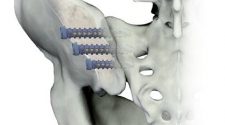Stem Cells have two unique characteristics that make it suitable for therapy or treatment for a growing number of diseases and conditions. Firstly, they have the ability to renew or create more cells of the same kind. Secondly, they can mature into specialised cells suitable to carry out a specific function, such as in the skin, muscle or bone.
Presently, apart from curing a number of health conditions such as heart diseases, neurodegenerative ailments, and diabetes, with every passing year, more diseases and conditions are being identified to be treated by using these cells. Clinical trials are in progress to treat blindness, stroke and spinal cord injury with the use of these cells. This may lead to a medical revolution in future.
For nearly 60 years, bone-marrow transplant has been the most common form of Stem Cell therapy, though this can be a prolonged, painful and expensive process. In contrast, blood stem cells derived from the umbilical cord are safer and less expensive to use for treatment.
Blood Cells have been proven to be of tremendous potential in treating diseases of the blood and immune system, as is evident from the thousands of cases where children have been successfully cured of leukaemia. The potential to regenerate tissue has led to treatments of diseases and injuries to the bone, skin and surface of the eye by grafting or implanting tissues.
Stem Cells unlike drugs do not dissolve in the body. Since they are living cells, they may grow and often react in unpredictable ways for the time they may remain in patients’ bodies. Therefore, these type of treatment has to be specific to each patient’s needs. It is important to understand that different stem cells come from different parts of the body and are meant for different treatments.
As a patient considering to undergo Stem Cell treatment, one must be curious and never shy away from being assured of scientific evidence that clearly demonstrates safety and effectiveness of a treatment. The patient must also in cases where a decision has been made in favour of stem cell treatment probe whether cells to be used for treatment are mixed or pure. Patients own stem cells may come from bone-marrow or fat, umbilical cord blood, foetal tissue or embryos. The risks and potential complications must also be clearly explained by the medical practitioner administering the treatment to the patient.
As much as one would like to believe that these cells are the miracle cure for most diseases and injuries, it certainly is not a cure-all and various clinical trials are at an experimental stage without established results and data to prove the safety and effectiveness of a treatment.












